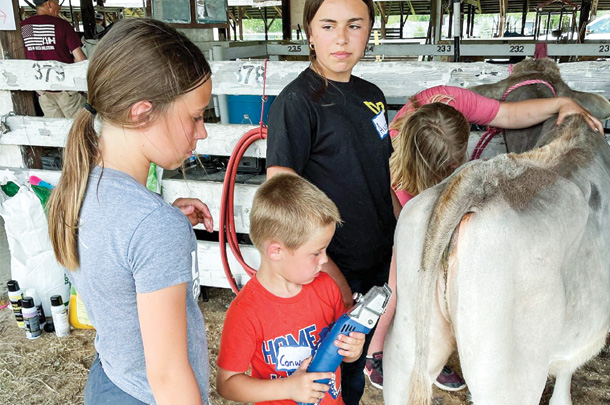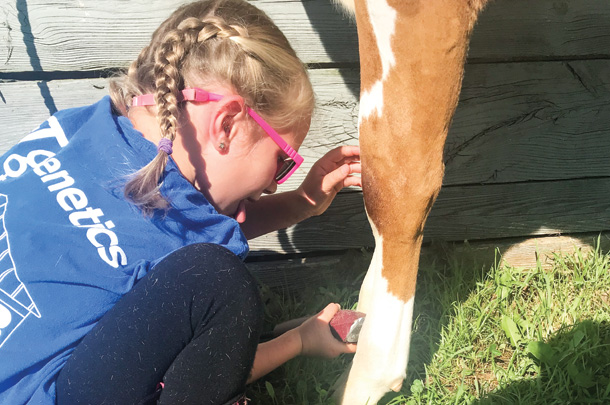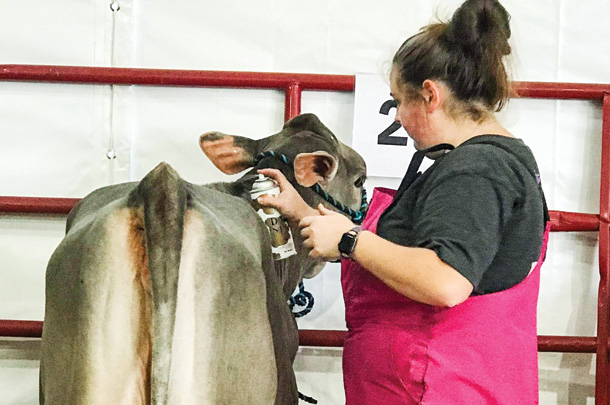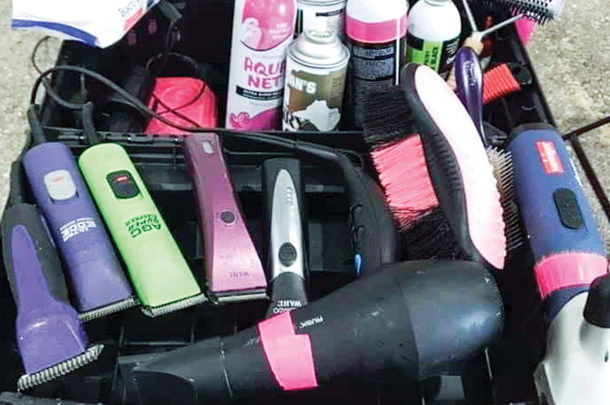In late summer of 2021, Hannah Loftin, an up-and-coming fitter and showman from North Carolina, turned to Facebook to ask if anyone had an animal she could fit in the World Dairy Expo fitting contest.
Kizzy Chwala, a Wisconsin native who had never met Hannah, responded with the statement that many had helped her and she’d like to return the favor by supporting Hannah. Hannah’s Facebook post led to a week in Madison fitting the Chwala Brown Swiss show string – a dream come true.
Learning to fit dairy cattle is a skill that produces a sense of satisfaction; making a good heifer look great is an unbeatable feeling. Below, you will find some things to help you get started on a fitting career – who knows, you may find yourself fitting a show string in Madison this fall.
Equipment to get you started
Fitting animals isn’t just cutting hair. There’s a lot that goes into getting a heifer or cow looking her best, learning how to handle a set of clippers, and the ins and outs of hair can help you tremendously. Here’s what the top fitters say you need to get started in the right direction:
 You are never too young to start clipping. Photo by Katie Coyne.
You are never too young to start clipping. Photo by Katie Coyne.
- Large animal clippers with blades that are size 23 and 31. New, corded clippers will cost around $400. Watch for sales on used clippers – refurbished clippers are a great way to get started with less expense.
- A hair dryer blower with a long nose and a concentrator on the end. The blower should have settings for high and low heat with varying speeds. While blowers are available for less than $40, to get one that will blow hair correctly, you should plan to spend between $40 and $100.
- A set of small clippers that are used for ears, tails, legs, udders and can be used to touch up other areas as well. Recommended blades for beginners are 10 (head and legs), 40 (ears, tails and touch-up) and 50s for udders. Small, corded clippers cost less than $200, with extra blades costing around $25 each.
- A good topline brush. Be sure to keep your brush clean – you don’t want to use a dirty brush on a clean topline.
- Clipper oil, not a spray. The spray doesn’t work to lubricate the blades; it simply increases speed. Most professional fitters do not use a coolant spray either – oil is the best way to keep blades and your clippers running smoothly.
- Be sure to have a good flathead screwdriver. Most clippers will come in a case with oil and the optimal screwdriver for changing blades and simple repairs.
- A good size toolbox to keep everything together, clean and dry. A toolbox with separate compartments and wheels works well.
Additions to your fitting supplies as you become more proficient
 You are never too young to start clipping. Photo by Katie Coyne.
You are never too young to start clipping. Photo by Katie Coyne.
- A second large clipper – corded or cordless – with tighter blades to achieve a cleaner, more dairy look for your animal. The best tight blade is an 84 bottom blade that has been “ground down” with sharpening. A cordless clipper is going to be an investment and will cost $500 or more.
- A large blower to remove hair and dust before clipping. This is also an excellent tool to blow and shape belly hair. A large blower will require around $450 in your budget. A smaller version will accomplish the same goal and retails at about $300.
- Cordless small clippers which will make clipping legs and other areas even easier – these are a great addition for a cost of $400.
- As you clip more frequently, you might want to add extra sets of blades and topline brushes to your box. Be sure to keep your blades wrapped in paper and in a blade holder or box so they aren’t broken during travel. Also, find someone who knows how to sharpen blades – replacing blades is only necessary when there is a broken tooth. Social media is a great place to get recommendations.
- A clipping chute. While many feel this is a must to get started, a 2-by-4 with a ring screwed into it and nailed to a wall will work just as well, as long as you’re able to tie the animal’s head up when clipping. A chute is a great addition to your show prep routine – but not necessary until you can easily afford one.
Here’s what you can do to start fitting this year:
 Hannah Loftin puts the finishing touches on her fitting contest entry. Photo by Katie Coyne.
Hannah Loftin puts the finishing touches on her fitting contest entry. Photo by Katie Coyne.
- Youth – Get brave and get clipping. If you make a mistake, hair will grow back. The best way to know your animal is to spend time with clippers in your hand working with her.
- Parents – Let them clip. Sure, provide guidance and support, but let them clip their own – they love it.
- Judges – If you see an interesting clip job, ask about it. Give credit to those starting out. Look through a rookie clip job and judge the animal as is; you should be able to do that. Remember, you started somewhere, too.
Have a great summer show season.







